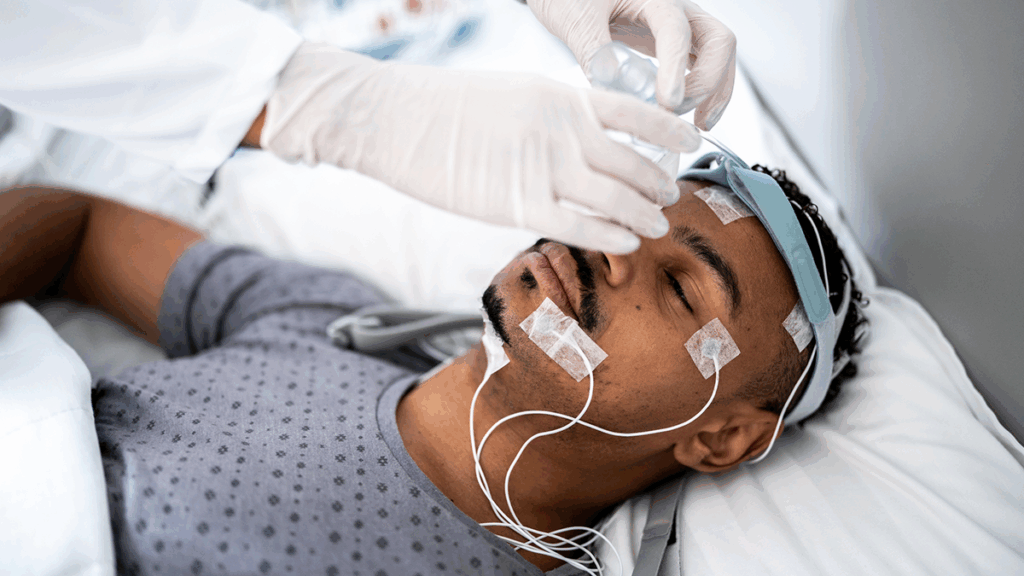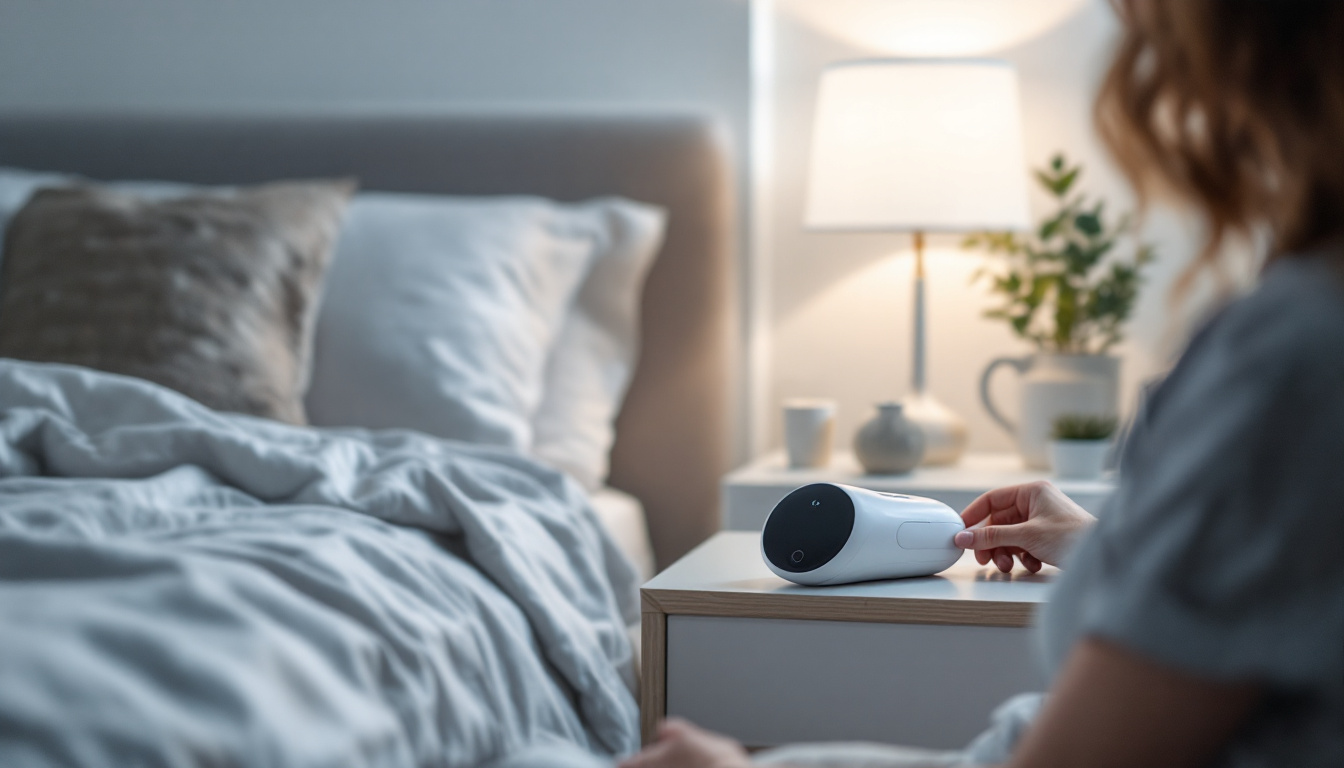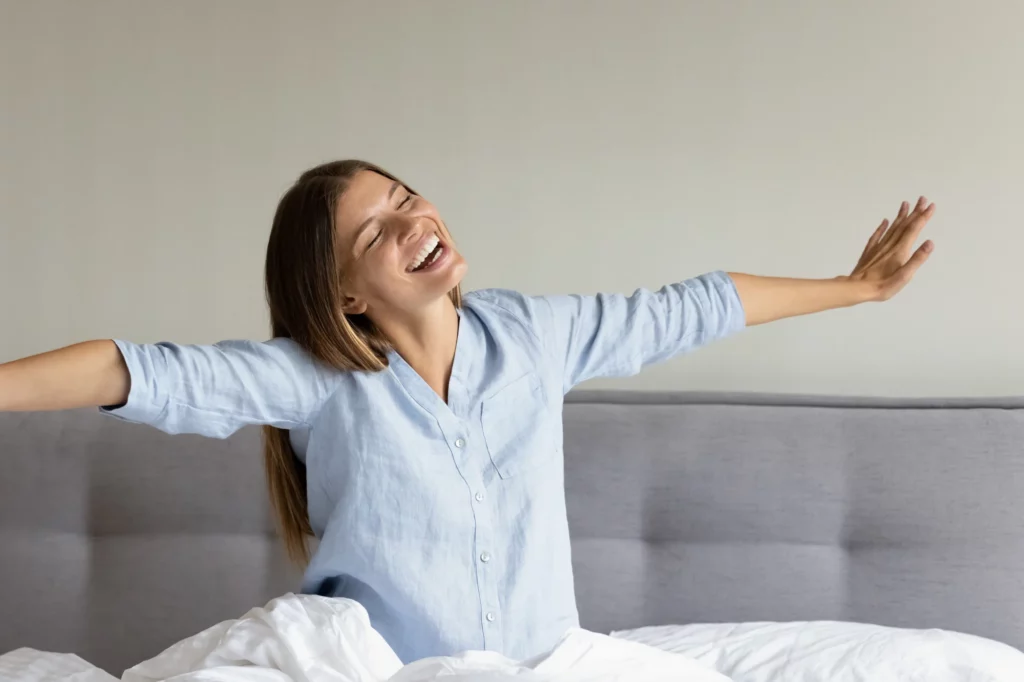Sleep apnea is a common yet often undiagnosed condition that affects millions of Australians. Characterised by interrupted breathing during sleep, it can lead to a host of health issues if left untreated. Fortunately, advancements in technology have made it easier than ever to test for sleep apnea from the comfort of your own home. This guide will walk you through the steps to conduct a sleep apnea test at home, ensuring you have the information you need to take control of your health.
Understanding Sleep Apnea
Before diving into the testing process, it’s essential to understand what sleep apnea is and how it can impact your health. Sleep apnea is primarily divided into two types: obstructive sleep apnea (OSA) and central sleep apnea (CSA). OSA is the most common form, occurring when the throat muscles intermittently relax and block the airway during sleep. CSA, on the other hand, is less common and occurs when the brain fails to send the appropriate signals to the muscles that control breathing.

Sleep apnea is a serious condition that can negatively impact health and quality of life. Conducting a sleep apnea test at home Australia is an effective way to diagnose this condition and take the first step towards treatment. By understanding the symptoms, preparing adequately, and interpreting the results with the help of a healthcare provider, individuals can take control of their sleep health. If you suspect you have sleep apnea, don’t hesitate to seek help—better sleep is within reach.
Individuals suffering from sleep apnea often experience excessive daytime sleepiness, loud snoring, and episodes of gasping or choking during sleep. If left untreated, sleep apnea can lead to serious health complications, including cardiovascular issues, diabetes, and even stroke. Understanding these risks underscores the importance of seeking a diagnosis and potential treatment. The condition can also have a profound effect on mental health, contributing to anxiety and depression due to the chronic fatigue and disrupted sleep patterns that many sufferers endure. Furthermore, the social implications, such as strained relationships and decreased work performance, can add to the burden of this often-overlooked disorder.
Symptoms to Watch For
Recognising the symptoms of sleep apnea is the first step towards getting help. Common indicators include:
- Persistent loud snoring
- Choking or gasping during sleep
- Daytime fatigue or sleepiness
- Morning headaches
- Difficulty concentrating
If you or someone you know exhibits these symptoms, it may be time to consider a sleep apnea test. It’s worth noting that the severity of sleep apnea can vary significantly from person to person, with some experiencing mild symptoms while others may face life-threatening episodes. This variability makes it crucial for individuals to seek professional evaluation, as early diagnosis can lead to effective management strategies. Additionally, lifestyle factors such as obesity, smoking, and alcohol consumption can exacerbate the condition, highlighting the importance of a holistic approach to treatment that may include weight management and behavioural changes alongside medical interventions.
The Benefits of Home Testing
Home sleep tests (HST) have gained popularity for several reasons. Firstly, they offer convenience; patients can conduct the test in their own environment, which can lead to more accurate results. Secondly, home testing is often more cost-effective compared to in-lab sleep studies. Lastly, it reduces the anxiety that some individuals may feel when sleeping in an unfamiliar setting.
Cost-Effectiveness
In Australia, the cost of a sleep study can vary significantly. Home testing is generally less expensive, making it a more accessible option for many. This affordability does not compromise the quality of the test, as home devices are designed to provide reliable data for diagnosing sleep apnea. Moreover, the savings extend beyond the initial test; patients who are diagnosed early can often avoid more costly treatments associated with untreated sleep disorders, such as cardiovascular issues or severe daytime fatigue. Learn more about affordability on https://pmc.ncbi.nlm.nih.gov/articles/PMC9342917/
Comfort and Convenience
Conducting a sleep test at home allows individuals to sleep in their own bed, surrounded by familiar sounds and smells. This comfort can lead to a more natural sleep pattern, which is crucial for obtaining accurate readings. Furthermore, the process is straightforward and can be completed in the privacy of one’s home. Patients can set up the equipment at their own pace, ensuring they feel comfortable with the devices before going to sleep. Additionally, many modern home testing kits are compact and user-friendly, often featuring clear instructions that guide users through the setup process, making it accessible even for those who may not be particularly tech-savvy.
Another significant advantage of home testing is the flexibility it offers in terms of scheduling. Individuals can choose to conduct their sleep test on a night that best suits their routine, which can be particularly beneficial for those with irregular work hours or family commitments. This flexibility not only enhances the likelihood of compliance but also allows for a more accurate representation of an individual’s typical sleep patterns. As a result, healthcare providers can make more informed decisions regarding diagnosis and treatment, ultimately leading to better health outcomes for patients.
Preparing for Your Home Sleep Test
Preparation is key to ensuring accurate results from your home sleep test. Here’s a step-by-step guide to help you get ready.

Consult Your Healthcare Provider
The first step is to consult with a healthcare provider, preferably a sleep specialist. They will evaluate your symptoms and medical history to determine if a home sleep test is appropriate for you. If deemed necessary, they will provide you with a prescription and instructions for the test.
Choosing the Right Device
There are several types of devices available for home sleep testing. Most commonly, these devices monitor your breathing patterns, heart rate, and oxygen levels. Your healthcare provider will recommend a suitable device based on your specific needs. Ensure that you understand how to use the device before the night of the test. To learn more about oxygen click here.
Conducting the Sleep Test
Once you have your device and are prepared, it’s time to conduct the test. Follow these steps to ensure a successful experience.
Setting Up the Device
On the night of the test, set up the device according to the instructions provided. Most devices require you to place sensors on your chest, finger, and sometimes your nose. Ensure that all sensors are securely attached and that the device is functioning correctly before going to bed.
Maintaining a Normal Sleep Routine
It’s important to maintain your usual sleep routine during the test. Go to bed at your regular time and avoid any stimulants such as caffeine or nicotine before sleep. A normal sleep environment will yield the most accurate results, so ensure your bedroom is conducive to sleep—dark, quiet, and at a comfortable temperature.
Interpreting the Results
After completing the sleep test, the device will record data that will be analysed to determine whether you have sleep apnea. Understanding these results is crucial for your next steps.
What to Expect from the Results
The results will typically indicate the severity of any sleep apnea present, measured by the Apnoea-Hypopnoea Index (AHI). This index quantifies the number of apnoea and hypopnoea events per hour of sleep. A higher AHI score indicates more severe sleep apnea.
Consulting with Your Doctor
Once you receive your results, schedule a follow-up appointment with your healthcare provider. They will help you interpret the data and discuss potential treatment options. Treatment may include lifestyle changes, the use of a continuous positive airway pressure (CPAP) machine, or other interventions based on the severity of your condition.
Potential Treatment Options
Should your home sleep test confirm a diagnosis of sleep apnea, various treatment options are available. The choice of treatment will depend on the severity of your condition and personal preferences.
Lifestyle Changes
For mild cases of sleep apnea, lifestyle changes may be sufficient. These can include:
- Weight loss
- Regular exercise
- Avoiding alcohol and sedatives
- Sleeping on your side instead of your back
Implementing these changes can significantly improve sleep quality and reduce symptoms.
CPAP Therapy
For moderate to severe sleep apnea, CPAP therapy is often recommended. This involves wearing a mask connected to a machine that delivers a continuous stream of air, keeping the airway open during sleep. While it may take some time to adjust to wearing the mask, many patients report significant improvements in their sleep quality and overall health.
Other Treatment Options
In some cases, other treatments may be necessary. Oral appliances designed to reposition the jaw can be effective for certain individuals. Additionally, surgical options are available for those who do not respond to other treatments. Discussing these options with a healthcare provider can help determine the best course of action.
Read more at: Is a Sleep Apnea Test Bulk Billed




